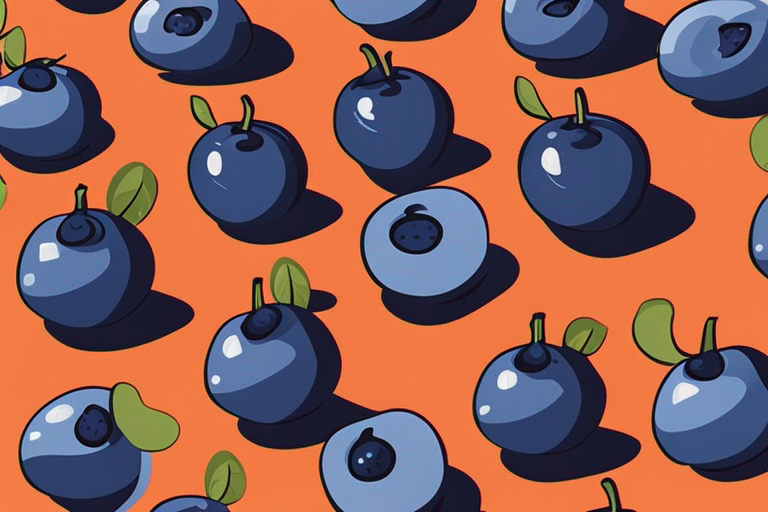
Signs that Fresh Blueberries Have Gone Bad
Get Your Free Food Safety Cheat Sheet
30 most common foods with instant answers. Print it and stick it on your fridge—completely free!
Signs that Fresh Blueberries Have Gone Bad
Blueberries are a popular and versatile fruit that can be enjoyed fresh, frozen, or in various dishes. However, like all perishable foods, fresh blueberries can spoil if not stored properly. In this blog post, we will discuss the signs that indicate your fresh blueberries may have gone bad. Knowing these signs can help you avoid consuming spoiled blueberries and ensure you enjoy them at their best. (Blueberries fresh)
How to Tell if Blueberries Have Gone Bad
Fresh blueberries are typically plump, firm, and have a vibrant color. When they start to spoil, their appearance, texture, and smell can change. Here are some common signs that your fresh blueberries may have gone bad:
1. Mold Growth
- Visible Mold: If you notice fuzzy white, green, or black spots on the surface of the blueberries, it is a clear indication that mold has started to grow.
- Soft or Wrinkled Texture: Mold can cause the blueberries to become soft, mushy, or wrinkled.
2. Discoloration
- Dull or Darkened Color: Fresh blueberries should have a bright, uniform color. Discoloration, such as a dull or darkened appearance, can indicate spoilage.
- Browning: If you see any blueberries turning brown or developing dark spots, it is a sign that they are no longer fresh.
3. Unpleasant Odor
- Foul Smell: Spoiled blueberries can emit a sour, musty, or fermented odor. If the blueberries smell off or unpleasant, it is best to discard them.
4. Slimy Texture
- Sticky or Slimy Feel: Spoiled blueberries may develop a sticky or slimy texture due to bacterial growth. If the berries feel slimy when touched, they are no longer safe to eat.
5. Taste Test
- Off Flavor: If you detect any off or unusual flavors when tasting the blueberries, it is a strong indication that they have gone bad. Trust your taste buds and discard the berries if they taste unpleasant.
Tips for Storing Blueberries to Extend Freshness
Proper storage is key to maintaining the freshness and quality of blueberries. Here are some tips to help you store fresh blueberries correctly and extend their shelf life:
-
Refrigerate Promptly: As soon as you bring fresh blueberries home, refrigerate them in a breathable container or perforated plastic bag to prevent moisture buildup.
-
Do Not Wash Until Use: Avoid washing blueberries until you are ready to eat them. Moisture can promote mold growth, so it is best to wash the berries just before consumption.
-
Remove Spoiled Berries: Regularly inspect your blueberries for any signs of spoilage and promptly remove any berries that show mold or other signs of decay to prevent the spread of spoilage.
-
Store Away from Ethylene-Producing Fruits: Blueberries are sensitive to ethylene gas, which can accelerate ripening and spoilage. Keep them away from fruits like apples, bananas, and tomatoes that release ethylene gas.
-
Consider Freezing: If you have an abundance of fresh blueberries, consider freezing them for longer-term storage. Wash, dry, and freeze the blueberries on a baking sheet before transferring them to a freezer-safe container.
By following these storage tips, you can help preserve the freshness and flavor of your blueberries for a longer period.
Conclusion
Fresh blueberries are a delicious and nutritious fruit that can enhance a variety of dishes. By being aware of the signs of spoilage and following proper storage practices, you can enjoy fresh blueberries at their best and avoid consuming berries that have gone bad. Remember to always inspect your blueberries before consumption and trust your senses when determining their freshness. With these tips in mind, you can make the most of your fresh blueberries and minimize food waste. (Blueberries fresh)

Authoritative Food Safety References
These agencies and university labs inform every tip and health precaution we publish.
USDA FoodKeeper – Cold Storage Guidelines
Official refrigerator, freezer, and pantry timelines maintained by the U.S. Department of Agriculture.
Visit USDA FoodKeeperFDA Produce Safety Rule & Grower Guidance
Field-to-fridge handling practices that prevent contamination of fruits, vegetables, and leafy greens.
Visit FDA Produce SafetyCDC Foodborne Illness Prevention Hub
Surveillance-backed guidance on pathogens, symptoms, and steps to reduce foodborne illness risk.
Visit CDC Food SafetyUC Davis Postharvest Technology Center
University research detailing optimal storage atmospheres for produce after harvest.
Visit UC Davis PostharvestPenn State Extension – Home Food Preservation & Safety
Peer-reviewed extension bulletins on safe canning, chilling, and reheating practices.
Visit Penn State ExtensionCan I still eat blueberries that are slightly wrinkled?
How should I store fresh blueberries to prevent them from spoiling quickly?
Can I freeze blueberries to preserve them for longer?
Are there any food safety guidelines I should follow when buying fresh blueberries?
Get Your Free Food Safety Cheat Sheet
30 most common foods with instant answers. Print it and stick it on your fridge—completely free! Want more? Upgrade to the complete guide with 70+ foods.
Scan your food directly and get instant safety info using our AI-powered camera feature.